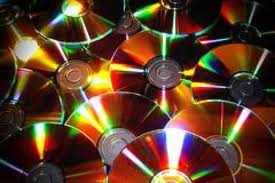Examples of Storage Device
A
data storage device is a device for recording (storing) information (data). Recording can be done using virtually any form of energy, spanning from manual muscle power in handwriting, to acoustic vibrations in phonographic recording, to electromagnetic energy modulating magnetic tape and optical discs.
A storage device may hold information, process information, or both. A device that only holds information is a recording medium. Devices that process information (data storage equipment) may either access a separate portable (removable) recording medium or a permanent component to store and retrieve information.
FLASH DRIVE
A
USB flash drive consists of a flash memory
data storage device integrated with a USB (Universal Serial Bus) interface. USB flash drives are typically removable and rewritable, and physically much smaller than a floppy disk. Most weigh less than 30 g (1 oz).
Storage capacities in 2010 can be as large as 256
with steady improvements in size and price per capacity expected. Some allow 1 million write or erase cycles and have a 10-year data retention cycle.
....................................................................................................................................................................
COMPACT DISC
A
Compact Disc (also known as a
CD) is an optical disc used to store digital data. It was originally developed to store sound recordings exclusively, but later it also allowed the preservation of other types of data. Audio CDs have been commercially available since October 1982. In 2010, they have been largely replaced by other forms of digital storage such as flash drives, with audio CD sales dropping nearly 50% from their peak in 2000.
Standard CDs have a diameter of 120 mm and can hold up to 80 minutes of uncompressed audio (700 MB of data). The Mini CD has various diameters ranging from 60 to 80 mm; they are sometimes used for CD singles or device drivers, storing up to 24 minutes of audio.
DVD
DVD, also known as Digital Video Disc or Digital Versatile Disc, is an optical disc storage media format, and was invented and developed by Philips, Sony, Toshiba, and Time Warner in 1995. Its main uses are video and data storage. DVDs are of the same dimensions as compact discs (CDs), but are capable of storing almost seven times as much data.
...................................................................................................................................................................
HARD DISK
A hard disk drive (HDD) is a non-volatile, random access device for digital data. It features rotating rigid platters on a motor-driven spindle within a protective enclosure. Data is magnetically read and written on the platter by read/write heads that float on a film of air above the platters.
The first HDD was invented by IBM in 1956. They have fallen in cost and physical size over the years while dramatically increasing capacity. Hard disk drives have been the dominant device for secondary storage of data in general purpose computers since the early 1960s
...................................................................................................................................................................
................................................................................................................................................................





No comments:
Post a Comment